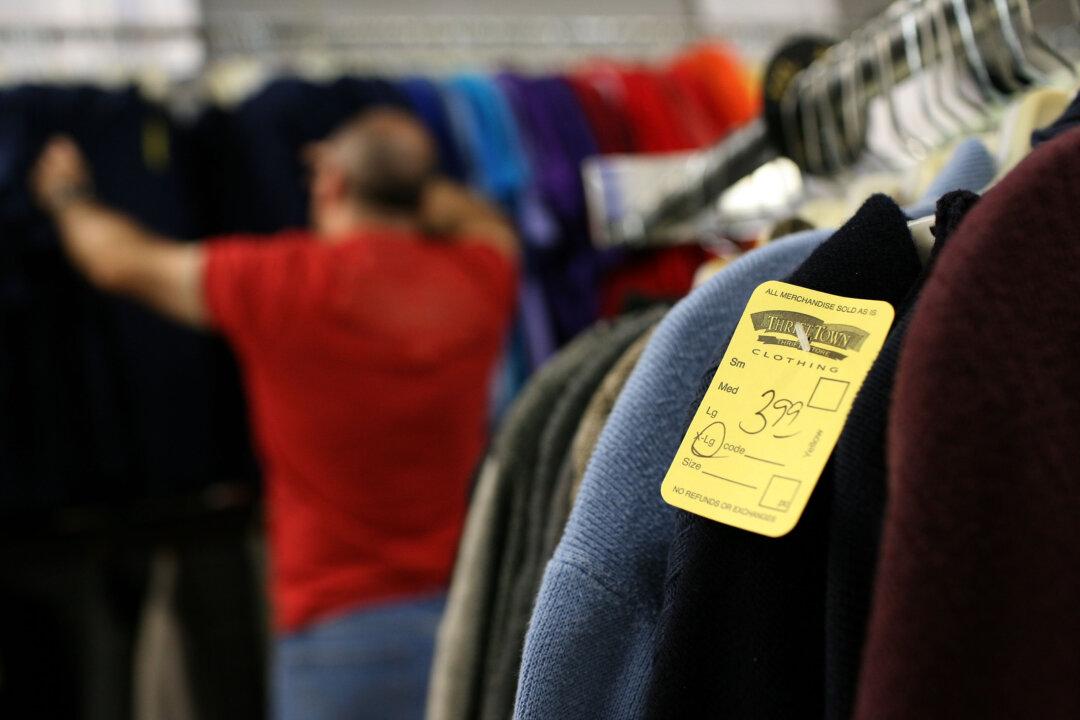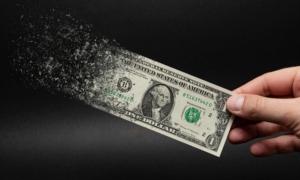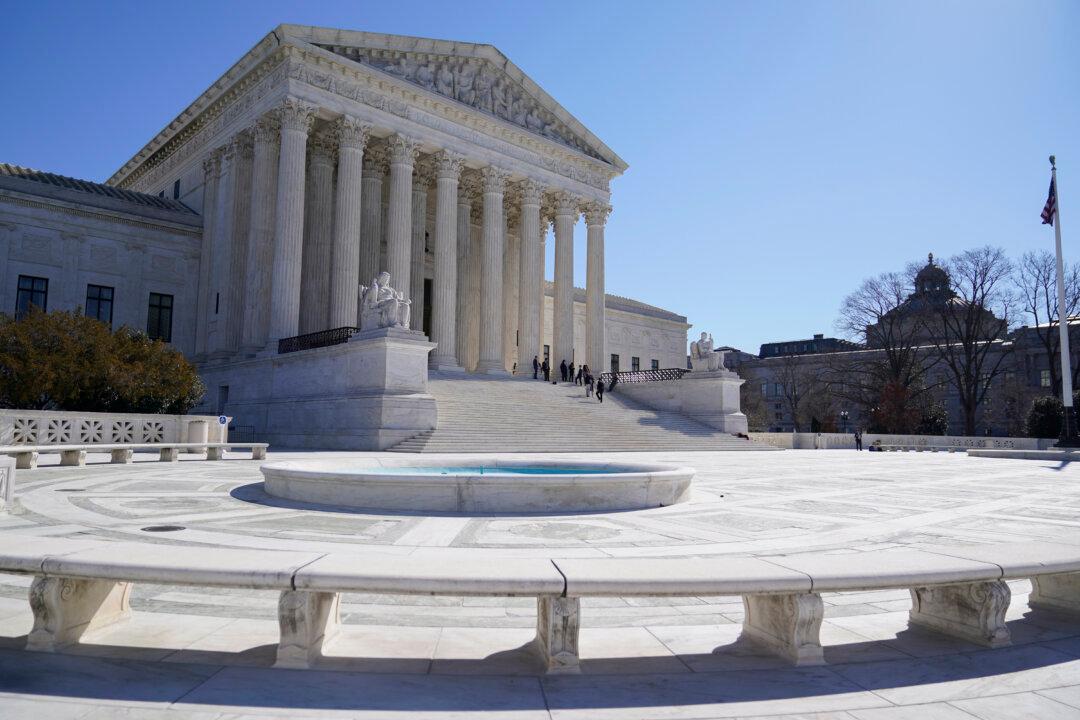The American middle class, albeit shrinking for decades, is being squeezed right now far more than anyone is admitting. If you open your eyes, you can see it happening everywhere.
Countless American families are nearing the panic stage, as the bills pile up and their net income is not enough to cover what needs to be paid. People are making adjustments to their spending habits but not soon enough.
Part of this impression is anecdotal. This is because understanding the fullness of the problem requires that you know how existing government data on inflation is unreliable. Jobs data and output data are skewed and misreported. If all of that is true, reporting on real income and loss of purchasing power is also not believable.
We are left to gather evidence from our own eyes. One interesting measure of consumer sentiment comes from the University of Michigan, which has been tracking this since the 1970s. Never having recovered from lockdowns, we are nearing 2008 levels again, having hit a record bottom in 2022. Instead of rising, this is falling. This seems realistic.

Think about the question. Imagine if someone from a survey report called and asked you if you are doing “okay” with your personal finances. No matter how worried you are, no matter how angry you are, this is a deeply personal question, and the answer you will likely give is that you are getting by, meaning okay, meaning that you are not facing down bill collectors or considering bankruptcy filings.
That’s a pretty low bar. In fact, it is hard to imagine a lower bar, or a survey question that is more designed to elicit the right answer. Even so, and given the question, it is extremely alarming that more than a quarter of Americans report that they are not doing “okay” financially. And the number of people who are willing to say that they are not is actually falling.
The rest of the report provides no real solace.
“The share of adults who said they spent less than their income in the month before the survey remained lower than the level it had been before the pandemic,” the report says, “suggesting that fewer adults have margin in their family budgets.”
“Twenty-seven percent of adults went without some form of medical care in 2023 because they could not afford it,” the report says, “similar to the share in 2022 but up from 24 percent in 2021. Dental care was the most frequently skipped, followed by visiting a doctor. Some people also reported skipping prescription medicine, follow-up care, or mental health visits.”
“When faced with a hypothetical expense of $400, 63 percent of all adults in 2023 said they would have covered it exclusively using cash, savings, or a credit card paid off at the next statement (referred to, altogether, as ‘cash or its equivalent’). The remainder said they would have paid by borrowing or selling something or said they would not have been able to cover the expense.”
Which is to say: a third of Americans can’t put their hands on $400. And incidentally, this survey over time makes no sense. In 2013, $400 would be $540 with the low estimate of inflation. The reality is closer to $650 and more, so the survey question should really change. If the number were corrected for an accurate estimate of inflation, the totals would look far worse.
There are other interesting revelations in the study, such as that nearly half the people who have college degrees in the social sciences, humanities, or arts would have changed their field of study in retrospect. That’s rather remarkable if you think about it. It suggests that vast numbers even among the privileged classes within the young adult population are regretting the course of their lives.
What I get from this survey is a picture of seething pain. Despite the headlines, this does not show a healthy and thriving middle class. Furthermore, it could be that people are only now waking up to what’s happened to them.
I was speaking to a friend yesterday who did that rare thing for me by presenting his family finances. With a mortgage and taxes, he and his wife, both of whom have graduate degrees and stable jobs, are barely making it. They end up with $78k between them after all taxes are paid, and that’s not enough to cover the mortgage, kid expenses, plus groceries, to say nothing of concert tickets and vacations.
They are panicking and do not know where to turn or what to do.
There is a habit everyone has which we might call legacy spending. We tend to shop at the same places, buy the same products, go on the same vacations, and drive the same amount as we always do. When it is a habit, we check the prices less than we otherwise would. If there is a frozen seafood mix you always buy at the store, you might not notice that it has gone from $8 to $16 in two years.
This inflation has been less noticeable than past ones because our payments are electronic. The items are scanned, we scan our cards, and the deed is done as if by magic. This might tempt people to believe that they are not spending real money. It’s all just digits and the digits have always been there. Does this make people less price-sensitive? One suspects so.
Which is why it comes as a shock when suddenly paying our bills leaves nothing left for discretionary spending or savings. This issue affects where we shop. We’ve always gone to this or that grocery store but now many people are rethinking this. This is causing a rush on discount groceries and thrift stores, which themselves are raising prices in response.
This daily grind and gradual awakening is potentially explosive from a sociological and political point of view. The luxury of caring about “climate change” and “social justice” moves way down the list of priorities when you cannot pay your bills.
“The average worker in the bottom half of the wage distribution generated earnings that do not even remotely support a middle-class living standard. In fact, this figure amounts to only 65 percent of the Federal poverty line for a household of 4 persons ($27,750) and is barely above the $14,580 poverty level for a single person household. In other words, the overwhelming bulk of the 84.5 million workers in the bottom half of the wage distribution pulled in paychecks over the course of 2022 which were below or just above the Federal poverty line!”
What a remarkable distance we’ve traveled from the late 1950s and 1960s when one income could support a middle-class lifestyle with a home and two cars. You could work your way through college. You could advance economically and socially generation by generation. Today this model of living is pretty much unthinkable. It seems like some bygone utopia that no one can even imagine.
It’s very hard for Americans to realize that the feature of life that defined who we are for a century—a nation of prosperous, healthy, and upwardly mobile middle class patriots—seems to be slipping away, and rapidly. The data is grim but hardly captures the whole of the problem. The reality of family finances has changed dramatically in four years, much more than the media is letting on or any Federal Reserve survey can capture.








